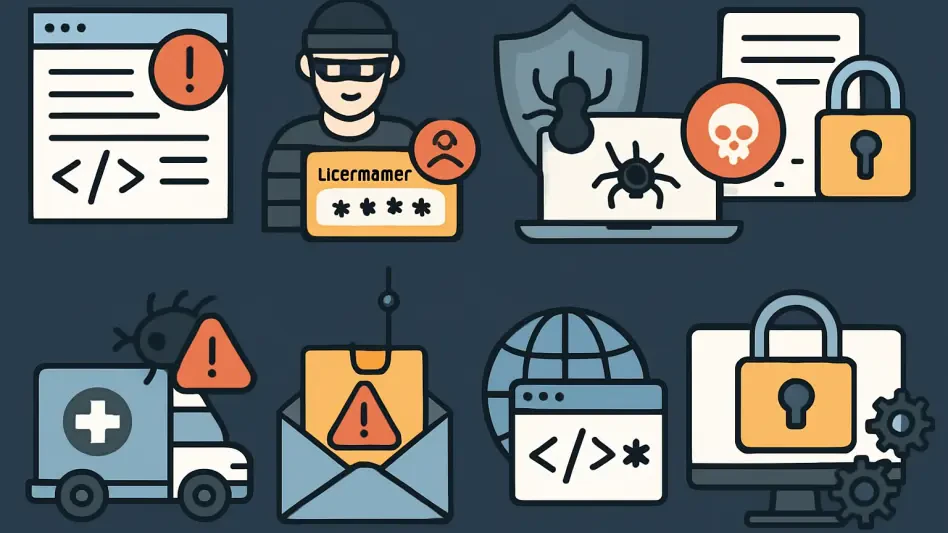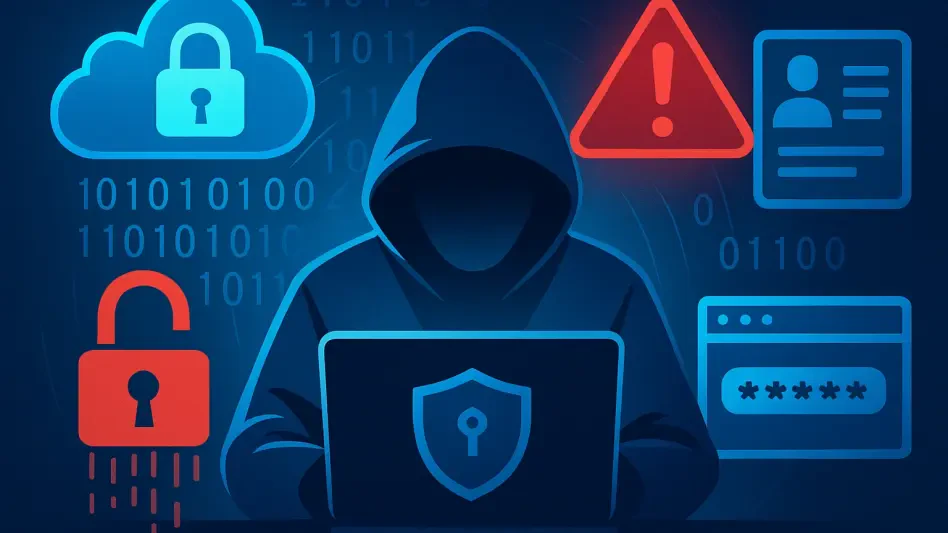On November 6, the Open Web Application Security Project (OWASP) unveiled its highly anticipated Top 10 list for this year, marking a significant milestone in the ongoing battle against web application vulnerabilities. This eighth iteration of the globally recognized resource serves as an essential tool for developers, cybersecurity experts, and organizations aiming to safeguard their digital assets in an era where threats evolve at an unprecedented pace. Far from a routine refresh, this update introduces groundbreaking changes that reflect the complexities of modern, cloud-driven, and interconnected software environments. With two entirely new risk categories added to the roster, alongside strategic reorganizations of existing threats, the list prioritizes root causes over superficial fixes. This shift underscores a maturing approach to cybersecurity, urging stakeholders to adapt swiftly. Delving into these updates reveals not only the latest dangers but also actionable insights for staying ahead of malicious actors in a dynamic threat landscape.
Highlighting Fresh Threats on the Horizon
The most striking aspect of the OWASP Top 10 for this year is the introduction of two new risk categories that address critical, emerging vulnerabilities. A03:2025 – Software Supply Chain Failures expands significantly on a previous concern about outdated components, now encompassing a broader spectrum of risks tied to dependencies, continuous integration/continuous deployment (CI/CD) pipelines, and even the infrastructure behind software distribution. This category stands out due to its high exploitability and potential for widespread impact, driven by community concerns over how interconnected systems can become attack vectors. With modern development heavily reliant on third-party tools and open-source libraries, a single weak link in the supply chain can cascade into catastrophic breaches. Addressing this requires rigorous vetting of components and securing build processes, a challenge that many organizations are only beginning to tackle with the urgency it demands in today’s fast-paced tech ecosystem.
Another critical addition, A10:2025 – Mishandling of Exceptional Conditions, brings attention to the often-overlooked issue of improper error handling and logical flaws in software. This category highlights how systems failing in unexpected ways—such as during crashes or abnormal states—can expose sensitive data or enable denial-of-service (DoS) attacks. Unlike broader code quality concerns of the past, this risk zeros in on specific failure states that leave systems vulnerable, often in ways that are subtle yet devastating. The community has recognized that without robust mechanisms to manage exceptions securely, even well-designed applications can become entry points for attackers. Developers must now prioritize building resilience into error-handling processes, ensuring that systems fail safely rather than opening doors to exploitation. This new focus marks a deeper understanding of how seemingly minor coding oversights can lead to significant security lapses.
Reassessing and Repositioning Known Dangers
Beyond the debut of new categories, the OWASP Top 10 list has undergone notable restructuring to reflect shifting priorities in the cybersecurity landscape. A01:2025 – Broken Access Control continues to hold the top position, a testament to its persistent prevalence in security testing, appearing in a majority of assessments. This enduring issue points to widespread challenges in enforcing proper authorization mechanisms, allowing unauthorized access to sensitive data or functions. Despite years of awareness, the complexity of modern applications and inconsistent implementation of controls keep this risk at the forefront. Organizations must double down on comprehensive access policies and regular audits to close these gaps, as attackers relentlessly exploit such weaknesses to infiltrate systems with alarming ease in diverse digital environments.
In a significant shift, A02:2025 – Security Misconfiguration has climbed to the second spot, underscoring the growing difficulty of maintaining secure settings across increasingly intricate cloud and hybrid setups. As applications span multiple platforms, missteps in configuration—whether through default settings, overly permissive permissions, or unpatched systems—create ripe opportunities for exploitation. This rise in ranking reflects a sobering reality: the pace of technological adoption often outstrips the ability to secure it properly. Automated tools for detecting and correcting configuration errors are becoming indispensable, yet many organizations lag in adopting such solutions. Addressing this risk demands a proactive stance, emphasizing standardized configurations and continuous monitoring to prevent vulnerabilities from arising in the first place amidst ever-evolving infrastructure challenges.
Sharpening Definitions for Greater Clarity
Alongside positional changes, the OWASP Top 10 has refined the naming of certain categories to enhance understanding and focus among practitioners. A07:2025 – Authentication Failures and A09:2025 – Logging & Alerting Failures have been retitled to better convey their scope and urgency. The former emphasizes breakdowns in verifying user identities, a foundational element of security that remains a frequent target for attackers seeking to bypass defenses. By clarifying the language, OWASP aims to ensure that stakeholders prioritize robust authentication mechanisms, from multi-factor authentication to secure session management, as essential barriers against unauthorized access in an era of sophisticated credential theft.
Meanwhile, the update to A09:2025 – Logging & Alerting Failures shifts the focus from mere data collection to the creation of meaningful, actionable alerts. Too often, critical security events slip through the cracks due to inadequate monitoring systems that fail to notify teams in time to respond. This refined category pushes for systems that not only log incidents but also trigger timely warnings, enabling rapid detection and mitigation of threats. Such precision in terminology is not just academic—it serves as a practical guide for organizations to overhaul monitoring practices, ensuring that potential breaches don’t go unnoticed. This adjustment reflects a broader push to align security tools with real-world needs, closing gaps that attackers exploit when alerts fail to keep pace with evolving attack patterns.
Broader Shifts in the Cybersecurity Landscape
Looking at the bigger picture, the OWASP Top 10 for this year reveals critical trends shaping the future of cybersecurity. The spotlight on systemic issues, particularly through the inclusion of software supply chain risks, signals a growing recognition that vulnerabilities extend far beyond individual applications. With heavy reliance on open-source software and automated development pipelines, entire ecosystems are at stake if dependencies or build processes are compromised. This trend underscores a shift toward holistic security approaches, where protecting the entire supply chain becomes as vital as securing the end product, challenging organizations to rethink how they evaluate and manage third-party risks in an interconnected digital world.
Additionally, the emphasis on mishandling exceptional conditions points to a maturing understanding of how subtle flaws can escalate into major breaches. Small errors in code, once dismissed as minor, are now seen as potential gateways to significant disruptions like data exposure or system downtime. This awareness, coupled with the persistent dominance of access control issues, highlights a dual need for both granular attention to detail and reinforcement of fundamental security practices. As cloud-native architectures and complex systems become the norm, the cybersecurity community must balance innovation with vigilance, ensuring that foundational protections keep up with emerging risks while addressing nuanced, often hidden, vulnerabilities.
Actionable Strategies for a Stronger Defense
Turning to practical implications, the OWASP Top 10 provides a clear blueprint for organizations and developers aiming to bolster their security posture. The continued prevalence of broken access control at the top of the list demands unwavering commitment to stringent policies, regular testing, and enforcement of least-privilege principles to prevent unauthorized intrusions. This isn’t a one-time fix but an ongoing process, as evolving applications and user roles introduce new access challenges. Integrating automated validation tools and conducting frequent security reviews can help catch issues before they become exploitable, a necessary step in today’s threat environment where even a single lapse can lead to substantial damage.
The rise of security misconfiguration as a top concern, alongside new risks like software supply chain failures, calls for enhanced visibility and proactive measures across development and deployment phases. Organizations should invest in solutions that standardize configurations and scan for weaknesses continuously, while also scrutinizing third-party components and CI/CD workflows for potential vulnerabilities. Simultaneously, addressing mishandled exceptions requires embedding secure error-handling practices into coding standards from the outset. By weaving security into the fabric of DevSecOps processes, rather than treating it as an afterthought, teams can build resilience against both old and new threats, ensuring applications remain robust in the face of rapid technological change.
Reflecting on Updates and Looking Ahead
The release of the OWASP Top 10 list on November 6 marked a pivotal moment in cybersecurity, delivering a comprehensive framework that captured the evolving nature of web application threats through meticulous data analysis and community input. The introduction of categories addressing software supply chain failures and mishandled exceptional conditions spotlighted previously underrecognized dangers, while the repositioning of persistent risks like broken access control and security misconfiguration reminded everyone of enduring challenges. This update served as both a mirror to current vulnerabilities and a guide for remediation, pushing the industry toward proactive, design-driven security.
Moving forward, organizations should seize this opportunity to align their strategies with the insights provided, integrating robust access controls, configuration management, and supply chain oversight into their workflows. As OWASP continues to refine this resource with feedback through November 20 and a finalized version expected next year, staying engaged with these developments will be crucial. Adopting these priorities now can position teams to not only mitigate immediate risks but also anticipate future threats, fostering a culture of security that adapts to an ever-shifting digital landscape.








